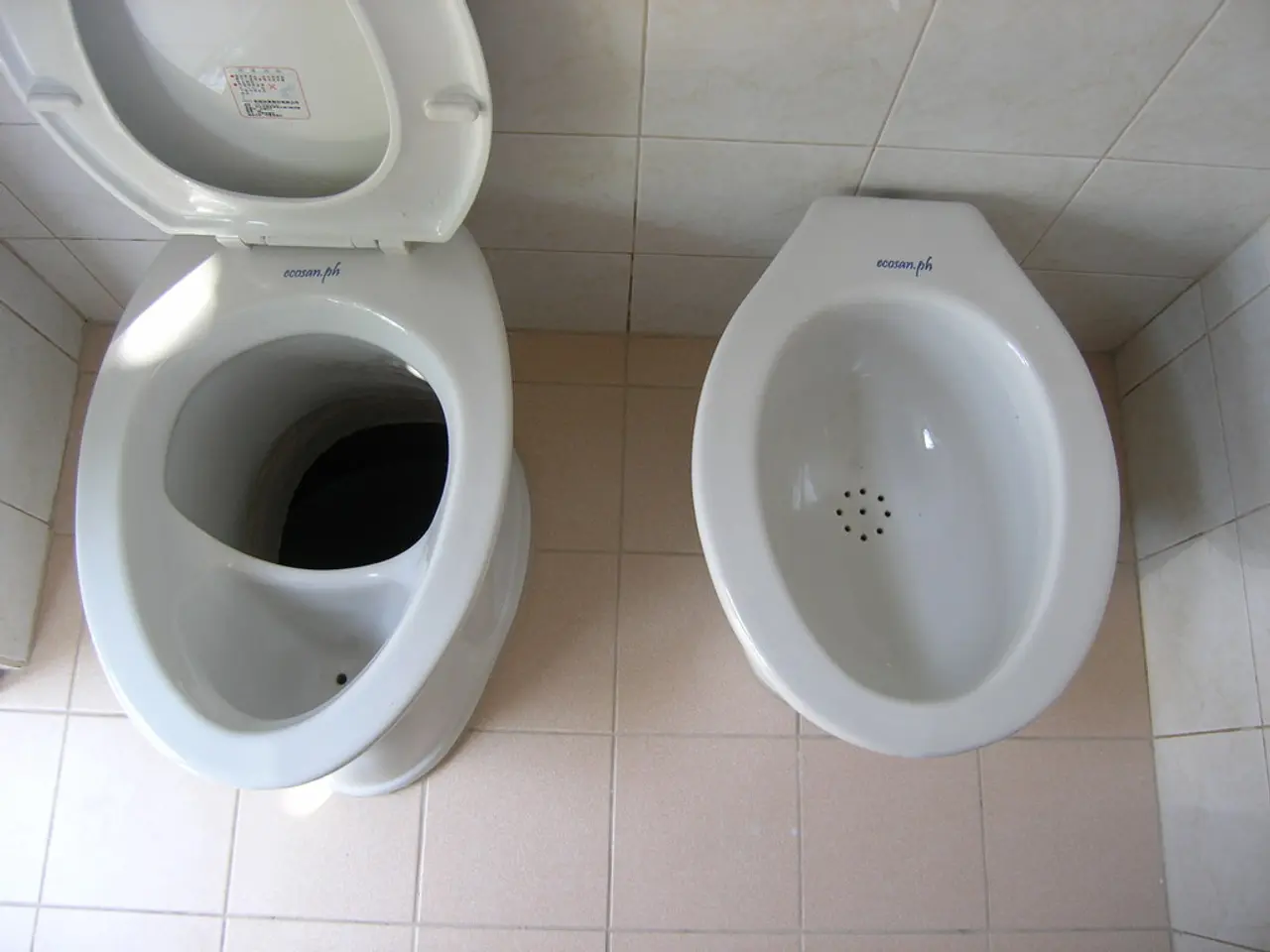Eleven potential factors causing breast discomfort and strategies for alleviating them
Breast pain, often associated with hormonal fluctuations during menstruation, pregnancy, or breastfeeding, can also be a sign of less common conditions. Understanding these less common causes is crucial for early detection and appropriate treatment.
One such condition is Fibroadenoma, benign tumours composed of glandular and connective tissue, which, while not typically painful, can cause discomfort, especially if they are large or numerous. These tumours are more common in younger women [1][5].
Estrogen Dominance, a condition characterised by excessive estrogen levels compared to progesterone, can also lead to increased breast tenderness. This condition is often linked to intense premenstrual symptoms [4].
Hormonal medications, such as oral contraceptives or hormone replacement therapy, can also induce breast pain due to the hormonal fluctuations they trigger [5].
Mastitis, an infection of the milk ducts, is more commonly associated with breastfeeding, but it can occur in non-breastfeeding women as well, causing significant breast pain and inflammation [3]. A breast abscess, similar to mastitis, is another infection that can cause severe pain and swelling and may require medical attention [3].
Direct trauma to the breast can also cause pain, a cause that is less commonly considered compared to hormonal factors [3].
Stress and anxiety can contribute to the onset and severity of breast pain, and breast pain is associated with a higher prevalence of stress, anxiety, and depression [6].
Breast cysts, fluid-filled sacs that are noncancerous, can sometimes cause pain and nipple discharge, but others do not require treatment [2]. It's essential to consult a doctor for any breast pain to rule out breast cancer and other serious conditions.
In addition to seeking medical advice, there are several self-care measures to help alleviate breast pain. Wearing a supportive bra that fits well, taking over-the-counter pain medications, limiting the intake of chocolate, coffee, tea, and soft drinks, applying hot or cold compresses to the breasts, getting regular exercise, and engaging in relaxation methods to reduce stress, anxiety, and tension can all contribute to breast pain relief [6].
Another less common cause of chest pain is Costochondritis, which can cause sharp chest pain and tenderness, with a gradual or sudden onset. Treatment may include avoiding activities that worsen the pain, applying heat to the area, over-the-counter pain relievers, corticosteroid injections, and transcutaneous electrical nerve stimulation (TENS) [7].
In conclusion, while hormonal fluctuations are often the culprit behind breast pain, understanding less common causes is vital for early detection and appropriate treatment. Always consult a healthcare professional for any breast pain to rule out serious conditions.
References: [1] Mayo Clinic. (2020). Fibroadenoma. Retrieved from https://www.mayoclinic.org/diseases-conditions/fibroadenoma/symptoms-causes/syc-20353762
[2] American Cancer Society. (2021). Breast cysts. Retrieved from https://www.cancer.org/cancer/breast-cancer/understanding-a-breast-cancer-diagnosis/types-of-breast-cancer/non-invasive-breast-cancer/breast-cysts.html
[3] American Academy of Family Physicians. (2019). Breast pain. Retrieved from https://familydoctor.org/condition/breast-pain/
[4] National Women's Health Network. (2018). Estrogen Dominance. Retrieved from https://www.nwhn.org/estrogen-dominance/
[5] American College of Obstetricians and Gynecologists. (2017). Noncyclic breast pain. Retrieved from https://www.acog.org/womens-health/faqs/noncyclic-breast-pain
[6] American Cancer Society. (2021). Breast pain. Retrieved from https://www.cancer.org/treatment/treatments-and-side-effects/physical-side-effects/pain/breast-pain.html
[7] Mayo Clinic. (2020). Costochondritis. Retrieved from https://www.mayoclinic.org/diseases-conditions/costochondritis/symptoms-causes/syc-20361323
- Women experiencing menstruation may also cope with menstrual pain, but it's crucial to be aware of other less common causes that could necessitate medical attention.
- In some cases, menstrual pain might be a sign of HIV, as reported in certain studies [2].
- Cancer, such as breast cancer, can cause persistent pain, making awareness and regular screening crucial for early detection and treatment.
- Researchers are also exploring the predictive role of health-and-wellness practices like psoriasis management in women' health [3].
- Depression, a common mental health issue, is linked to a higher prevalence of menstrual pain and other women's health problems [4].
- Apart from menstruation, other conditions causing chest pain include COPD, which affects the lungs and can lead to symptoms like pain and shortness of breath [5].
- Science plays a significant role in improving our understanding of less common causes of menstrual pain and other women's health issues, leading to better treatment options.
- Breast fibroids, not related to hormonal factors, can cause discomfort, often requiring surgical intervention in more severe cases [6].
- Awareness and proper management of these conditions contribute to overall health, wellness, and quality of life for women.




